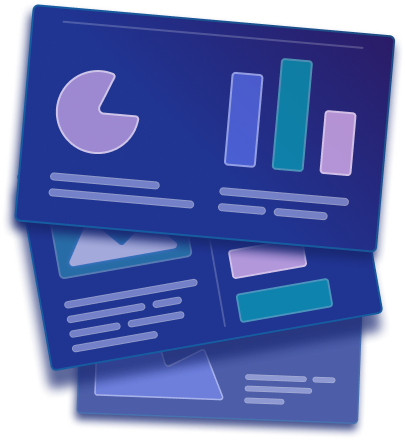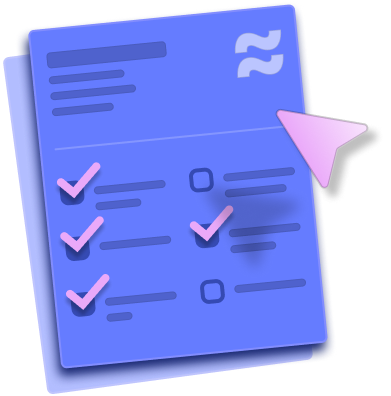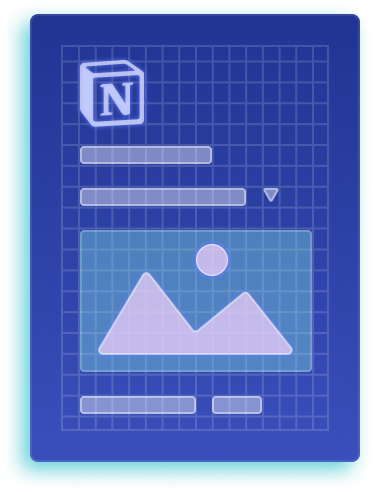-min.png)
How to Use Effective Copywriting to Boost Your Website's Conversion Rates
Contrary to popular belief, copywriting didn't start with digital marketing.
It actually dates back to the 1800s, when businesses were just starting to place ads in newspapers.
Back then, it was all about grabbing attention with bold headlines and catchy phrases.
In the 1950s, legends like David Ogilvy changed the game by using psychology to connect with people on a deeper level.
Now, in our age, the same principles apply, but the stakes are higher.
With a website like yours, it’s not just about throwing up some text—it’s about using words strategically, based on psychological insights, to make your visitors take the desired action.
Stick around if you want to learn about these principles and how to effectively use them to boost your website’s conversion rates.
{{cta}}
How Copywriting Influences User Behavior and Decision-Making
Many people are skeptical about the power of copywriting.
They ask, "Can simply changing the wording of a message really influence user behavior and make someone more or less likely to take action?"
The answer is yes—a good copy can significantly influence someone’s decision to take a specific action.
This is because copywriting is rooted in psychological principles.
These principles refer to the ways in which human thoughts, feelings, and behaviors are shaped by external stimuli.
Among these stimuli, language—the words we choose—is one of the most powerful forces that directly impact human behavior.
When a copy is created with these psychological principles in mind, it triggers emotional responses such as joy, fear, or urgency. These emotions play a key role in influencing a person to act or not act.
For example, when a user feels an emotional connection to a brand or message, they are more likely to engage—whether by staying longer on a website, clicking through, or interacting with a call-to-action.
Research shows that emotionally driven copy leads to 70% higher conversion rates.
Let’s illustrate this with an example. Compare these two sentences:
- “Buy our product now.”
- “Transform your daily routine—get the product that thousands swear by and start seeing results immediately. Act now for a limited-time discount!”
The difference is clear. The second sentence leverages emotional triggers by offering transformation, social proof (“thousands swear by”), and urgency (“limited-time discount”).
It’s far more compelling and likely to engage users.
Now, think about how the phrase “that thousands swear by” catches your attention. It might feel memorable and even a bit unusual, but that’s what makes it effective—it resonates on an emotional level.
A common misconception is that "good copy" simply means it’s grammatically correct, polite, or makes sense to the writer. In reality, good copy is about resonating with the reader—addressing their desires, pain points, and fears. Most importantly, it uses the language that the reader naturally uses in their daily life.
For example, when targeting Gen Z, using words like “Yeah,” “Bet,” and even emojis can be highly effective. This is because it deliberately speaks the language your audience uses and thinks with, making your message feel relatable and authentic.
Psychological Principles Behind Effective Copywriting
Loss Aversion
Principle: People are more motivated to avoid losses than to acquire gains.
How to Use: In your copy, stress what users might lose by not taking action (e.g., missing a special deal, time-limited offer, or exclusive content).
Practical Actions:
- Use phrases like:some text
- “By not signing up now, you could be missing out on saving $100 every month.”
- “Waiting might cost you—prices increase after midnight.”
Priming
Principle: Exposure to certain words or ideas influences the user’s behavior or decision-making later.
How to Use: Start your copy with emotionally or contextually charged words that align with the action you want the user to take. This subtly primes them to make a certain decision.
Practical Actions:
- Use positive or action-oriented words at the beginning of your headlines or paragraphs (e.g., "success," "boost," "unlock").
- Prime users for action by using words like “discover”, “enhance”, or “achieve” to encourage them to continue reading or to click.
Pacing Effect
Principle: Information that is broken up and spaced out is easier to remember and absorb.
How to Use: In your copy, present key information in smaller chunks, and repeat core messages at intervals to reinforce them without overwhelming the user.
Practical Actions:
- Structure content with spaced repetition of key points or benefits.
- Use short paragraphs and repeat critical CTAs multiple times throughout the page.
Storytelling Bias
Principle: People are more likely to remember and connect with stories than with facts or statistics alone.
How to Use: Use storytelling in your copy to help users emotionally connect with your product. Frame your product as a solution to a relatable problem through customer stories or case studies.
Practical Actions:
- Include customer success stories or personal anecdotes that highlight the impact of your product.
- Craft a narrative structure for your landing page copy that follows a story, from problem to solution.
The Endowment Effect
Principle: People value something more highly if they feel ownership over it, even before actually owning it.
How to Use: Use language that encourages users to feel like the product or service is already theirs (e.g., "your account," "your free trial").
Practical Actions:
- Use possessive language in your copy, such as “Your free trial” or “Start your journey today.”
- Create personalized user journeys by addressing the visitor directly with personalized messages.
The Contrast Principle
Principle: People make decisions based on comparative differences rather than in isolation.
How to Use: In your copy, compare your product's key features, benefits, or pricing to alternatives. By highlighting these differences, you can make your offer appear more attractive.
Practical Actions:
- Use comparative language like “Unlike competitors, we offer…” or “With our solution, you get X more than…”.
- Include side-by-side comparisons or feature tables that emphasize how your product is superior.
The six psychological principles are just the start. You implement them quickly on your website and see improvements if you’re interested in finding more, I highly encourage you to read Ca$hvertising by Drew Eric Whitman.
How to Measure the Impact of Copywriting on Your Website
Let’s assume you've already applied some principles to your website—great!
Now you might be wondering, how do I know if these changes will actually boost my conversion rate?
And more importantly, how do I measure the impact of these copywriting principles in the first place?
But first, wouldn’t it be better to highlight the most important key metrics you need to focus on?
Key Metrics for Evaluating Copywriting Effectiveness
1. Conversion Rate
What it is: The percentage of website visitors who complete the desired action (e.g., purchasing, signing up, or subscribing) after reading your copy.
How to calculate:
Conversion Rate = (Number of Conversions ÷ Total Visitors) × 100
Effectiveness: A high conversion rate shows that your copy is effectively motivating users to take action. A low rate suggests that the copy may not be persuasive enough or misaligned with user intent.
2. Click-Through Rate (CTR)
What it is: The percentage of website visitors who click on a call-to-action (CTA) link after reading your copy.
How to calculate:
CTR = (Number of Clicks ÷ Total Impressions) × 100
Effectiveness: A high CTR indicates that your copy is driving users to the next step. A low CTR may imply that the CTA lacks clarity, urgency, or relevance to the reader.
🔴 Important! Difference Between Conversion Rate and CTR:
CTR measures how many users click on a link, while Conversion Rate measures how many users complete a desired action (e.g., a purchase).
For example, if 100 users visit a page and 10 click on a product link (CTR of 10%), but only 2 actually buy the product (Conversion Rate of 2%), the copy may be good at generating interest but not that effective in closing the sale.
3. Bounce Rate
What it is: The percentage of users who visit a page on your website and leave without taking further action or viewing additional pages.
How to calculate:
Bounce Rate = (Single-Page Sessions ÷ Total Sessions) × 100
Effectiveness: A high bounce rate suggests that visitors are not finding your copy engaging or relevant, leading them to exit. A low bounce rate shows that your copy is capturing interest and encouraging users to explore more.
4. Scroll Depth
What it is: Measures how far down the page users scroll, indicating how much of your copy they are engaging with.
How to calculate: Available through website analytics tools (like Google Analytics), typically represented as percentages (e.g., 25%, 50%, 75%, 100% of the page).
Effectiveness: Higher scroll depth means visitors are reading more of your copy. If users consistently drop off early, it may indicate that the copy isn’t holding their attention or lacks compelling content above the fold.
Ways to Measure the Performance of Site’s Copy Updates
Direct Techniques
- A/B Testing (Split Testing)
Track the performance of your old copy over some time, such as one month. After updating the copy, monitor the performance for the same period and compare the results. Check how each version performs in terms of conversion, CTR, and bounce rate. This will help you determine if the new copy is actually performing better than the previous version.
- Heatmaps and Scroll Maps
Visual tools that track where users click on the page and how far they scroll down. This shows which parts of the copyhold attention or drive interaction.
- User Surveys and Feedback Forms
Place feedback forms or surveys on the site asking users about their experience with the updated copy. Direct feedback can reveal what users find persuasive or engaging.
Indirect Techniques
- Social Media Engagement and Shares
Use social media analytics tools to track the number of shares, likes, and comments on social media when your copy is linked. Increased engagement on these platforms can indicate that your updated copy resonates well with your target audience. Which made them happy to talk and interact with you brand as a whole.
- Lead Quality and Feedback from Sales Teams
Tracking does not always come from analytics tools, but sometimes from your people. Sales teams can provide feedback on the quality of leads generated after copy changes. If leads are more qualified, the copy likely improves.
- Customer Feedback from Support Teams
Your support teams can offer valuable insights into how customers respond to changes in your copy. If customers report greater clarity about your products, services, and offers after updates, and ask fewer questions, it’s a strong sign that the copy effectively communicates with your audience and reduces confusion.
Conclusion
Simply throwing words on your website and hoping for a higher conversion rate isn’t a strategy that works anymore.
With countless options available to your potential customers and their limited attention spans, you need to be more intentional with your copy.
I hope these principles have been explained clearly so you can start implementing them right away and quickly see the impact on your website’s performance.
{{cta}}





The 2024 Playbook for Website Customer Acquisition
After helping 200+ clients skyrocket their conversions, we've created an in-depth marketing guide for turning websites into sales drivers.
.png)

.png)

in mind?
Talk with our team and learn how your ideas can become digital experiences.

.svg)
.jpg)








.png)
.png)



-min.png)









.svg)

.png)
.png)
.webp)
.svg)


